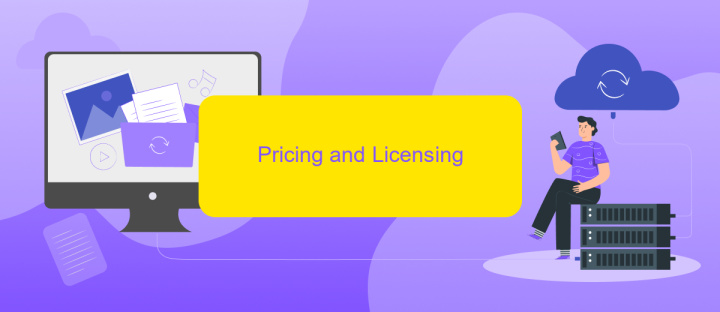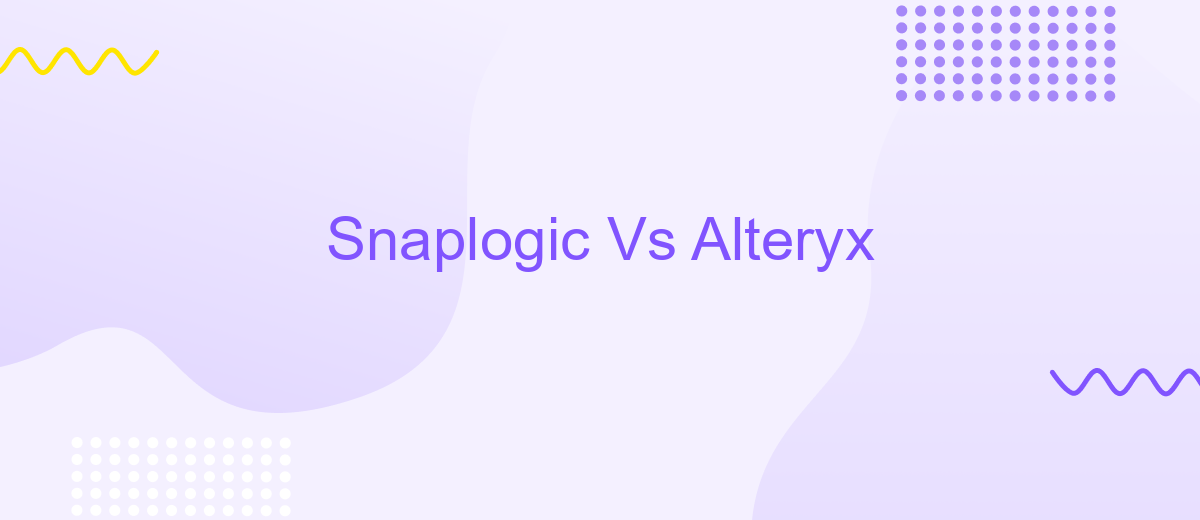Snaplogic Vs Alteryx
In the rapidly evolving landscape of data integration and analytics, choosing the right platform can significantly impact an organization's efficiency and decision-making capabilities. SnapLogic and Alteryx are two leading contenders in this space, each offering unique features and benefits. This article provides a comparative analysis of SnapLogic and Alteryx to help businesses determine which tool best suits their data needs.
Overview
SnapLogic and Alteryx are two prominent platforms in the realm of data integration and analytics. Both offer powerful tools for data professionals, yet they serve different needs and use cases, making it crucial to understand their key features and differences.
- SnapLogic: Designed for cloud-based data integration, SnapLogic excels in connecting various data sources and applications through its user-friendly, drag-and-drop interface.
- Alteryx: Known for its robust data analytics capabilities, Alteryx provides advanced tools for data preparation, blending, and analytics, which are essential for data-driven decision-making.
- ApiX-Drive: Complementing both platforms, ApiX-Drive offers seamless integration services, enabling businesses to automate workflows and connect disparate systems effortlessly.
Choosing between SnapLogic and Alteryx depends on your specific requirements. SnapLogic is ideal for those seeking efficient data integration solutions, while Alteryx caters to users needing comprehensive data analytics tools. ApiX-Drive can enhance the functionality of both platforms by providing additional integration capabilities, ensuring smoother and more efficient workflows.
Features and Capabilities

SnapLogic excels in its ability to streamline data integration through its intuitive, cloud-based platform. It offers a wide array of pre-built connectors and integration pipelines that simplify the process of connecting disparate systems. With its Elastic Integration Platform, SnapLogic enables real-time data flow and supports both batch and streaming data. The platform's user-friendly interface, combined with its AI-driven automation, allows users to design, monitor, and manage integrations with minimal coding effort.
Alteryx, on the other hand, focuses on empowering users with advanced data preparation, blending, and analytics capabilities. Its drag-and-drop workflow environment makes it accessible to both technical and non-technical users. Alteryx's robust set of tools includes predictive analytics, spatial analytics, and data enrichment features. Additionally, Alteryx integrates seamlessly with various data sources and platforms, providing a comprehensive solution for end-to-end data analysis. For those seeking enhanced integration capabilities, services like ApiX-Drive can further augment Alteryx's functionality by automating and simplifying the process of connecting multiple applications and data sources.
Pricing and Licensing

When comparing Snaplogic and Alteryx, understanding their pricing and licensing models is crucial for making an informed decision. Both platforms offer subscription-based pricing, but their structures differ significantly.
- Snaplogic: Snaplogic operates on a subscription model with pricing tiers based on the number of pipelines and data volume. They offer custom pricing tailored to the specific needs of larger enterprises, ensuring scalability and flexibility.
- Alteryx: Alteryx also uses a subscription-based model but focuses on user-based licensing. Their pricing is divided into Designer, Server, and Analytics Hub licenses, with additional costs for advanced analytics and data processing features.
While both platforms provide robust data integration and analytics capabilities, the choice between Snaplogic and Alteryx ultimately depends on your organization's specific requirements and budget. For businesses looking to streamline their integration processes further, services like ApiX-Drive can be invaluable, offering seamless automation and integration solutions that complement both Snaplogic and Alteryx.
Use Cases and Industries

Snaplogic and Alteryx are versatile platforms used across various industries to streamline data integration and analytics processes. Snaplogic excels in real-time data integration and automation, making it ideal for industries that require swift data movement and processing, such as finance and healthcare. Alteryx, on the other hand, is renowned for its advanced analytics and data preparation capabilities, making it a favorite among marketing and retail sectors.
Both platforms offer unique use cases that cater to different business needs. Snaplogic's ability to integrate with various APIs and cloud services makes it a powerful tool for businesses looking to enhance their data workflows. Alteryx's strength lies in its user-friendly interface and robust analytics features, which empower users to derive actionable insights from complex data sets.
- Finance: Real-time data processing and integration for fraud detection and risk management.
- Healthcare: Streamlined data integration for patient records and compliance reporting.
- Marketing: Advanced analytics for customer segmentation and campaign optimization.
- Retail: Data preparation and analytics for inventory management and sales forecasting.
For businesses seeking to automate their data workflows, services like ApiX-Drive can further enhance the capabilities of both Snaplogic and Alteryx. ApiX-Drive offers seamless integration solutions that help businesses connect various applications and services, ensuring efficient data flow and operational efficiency.
Conclusion and Recommendations
In conclusion, both Snaplogic and Alteryx offer robust data integration and analytics capabilities, but they cater to slightly different needs. Snaplogic excels in real-time data integration and cloud-based solutions, making it ideal for enterprises looking for seamless connectivity across various platforms. On the other hand, Alteryx stands out with its powerful data preparation and advanced analytics features, which are particularly advantageous for data analysts and business intelligence professionals.
For organizations seeking a flexible and user-friendly integration service, ApiX-Drive can be an excellent addition to either Snaplogic or Alteryx. ApiX-Drive simplifies the process of connecting different applications and automating workflows without requiring extensive technical expertise. Ultimately, the choice between Snaplogic and Alteryx should be guided by your specific business requirements, existing infrastructure, and the skill set of your team. Both tools have their unique strengths and can significantly enhance your data management and analytics capabilities.
FAQ
What are the primary differences between Snaplogic and Alteryx?
Which platform is better for real-time data integration?
Can both Snaplogic and Alteryx be used for ETL (Extract, Transform, Load) processes?
Which platform offers better support for non-technical users?
What are the options for automating workflows and integrations using these platforms?
Apix-Drive is a universal tool that will quickly streamline any workflow, freeing you from routine and possible financial losses. Try ApiX-Drive in action and see how useful it is for you personally. In the meantime, when you are setting up connections between systems, think about where you are investing your free time, because now you will have much more of it.

